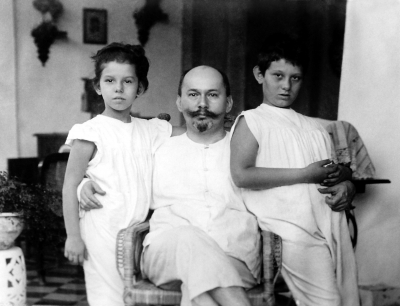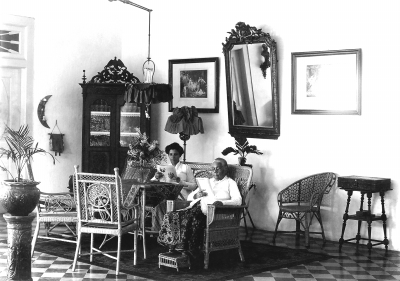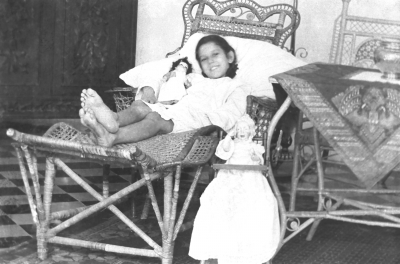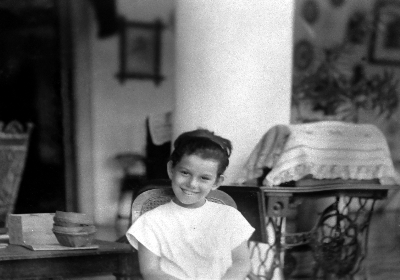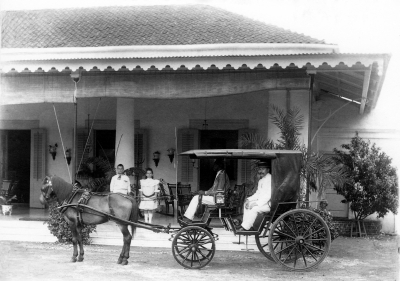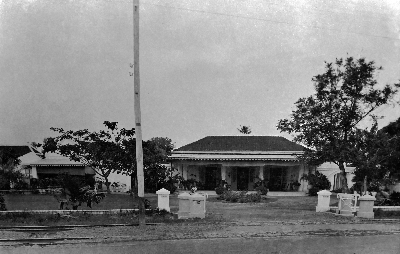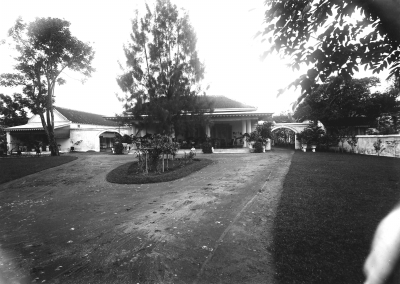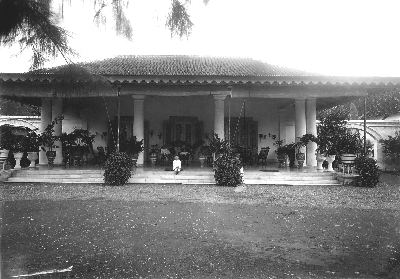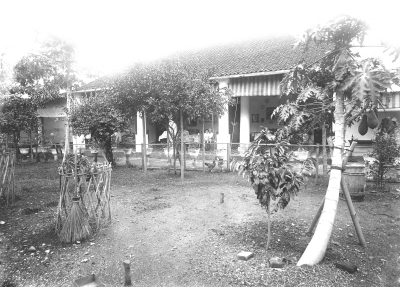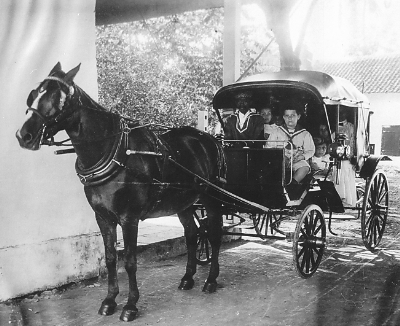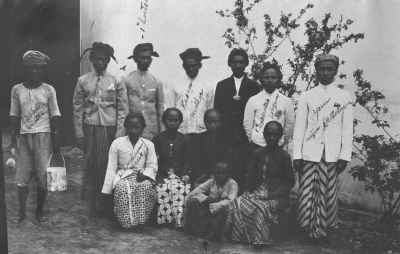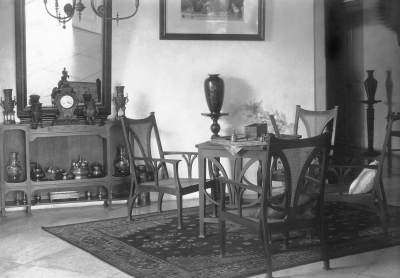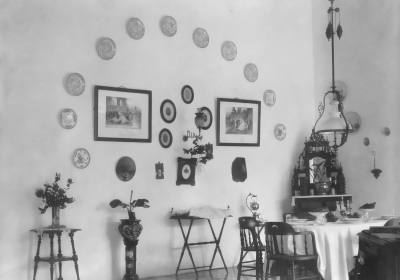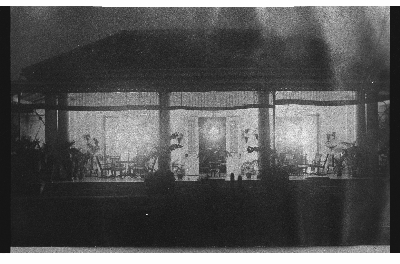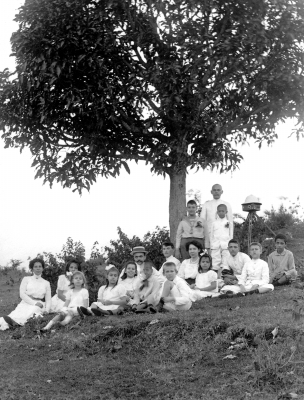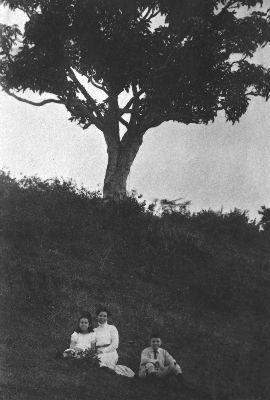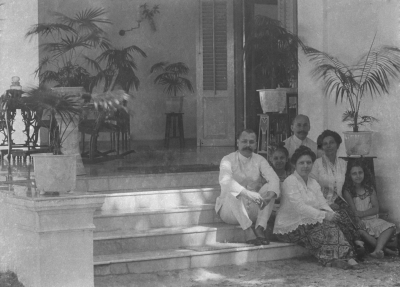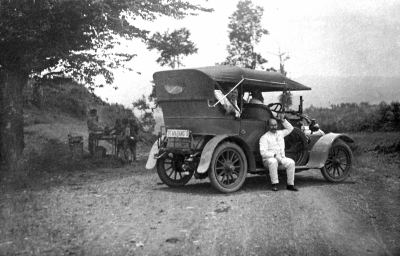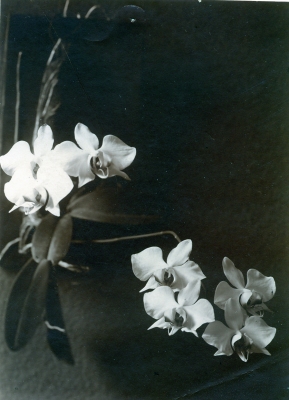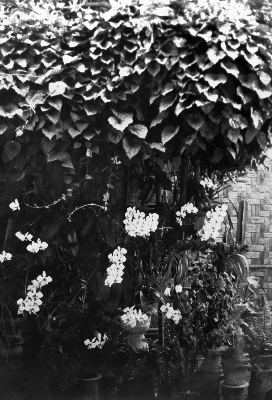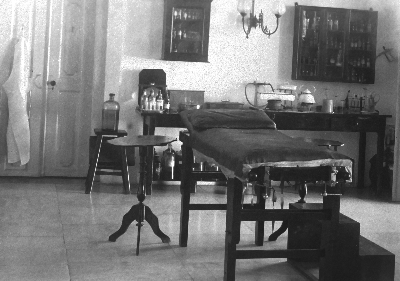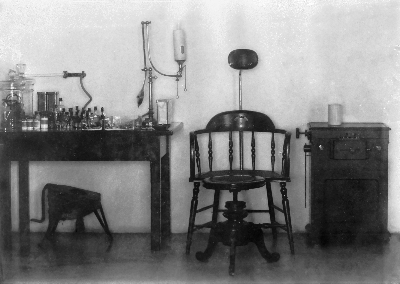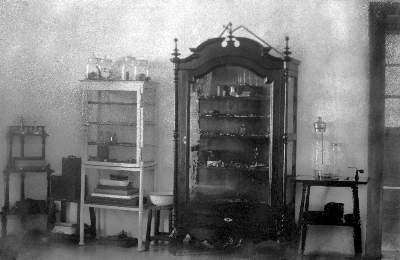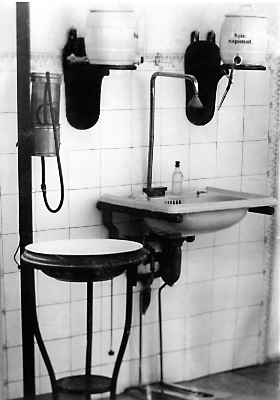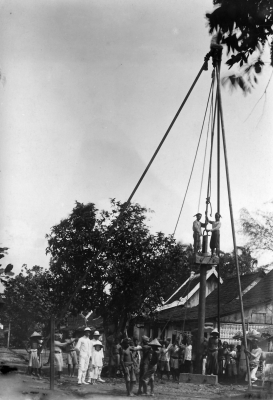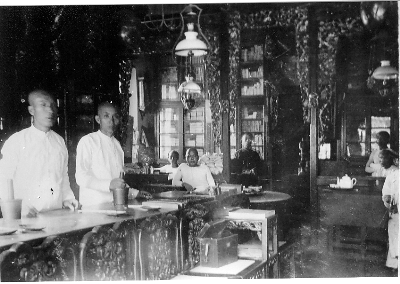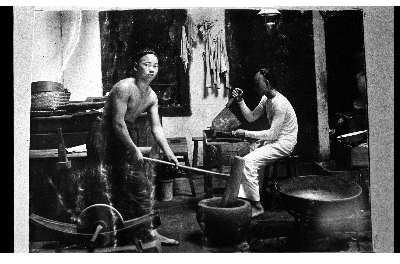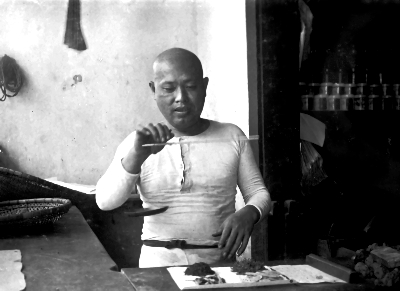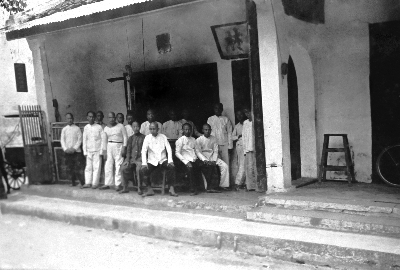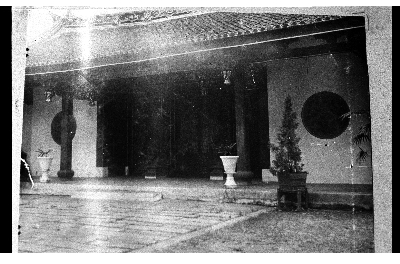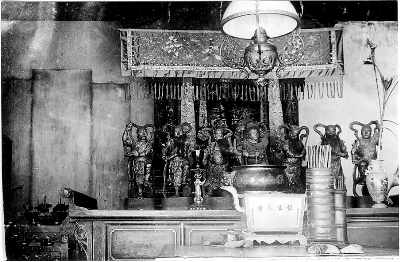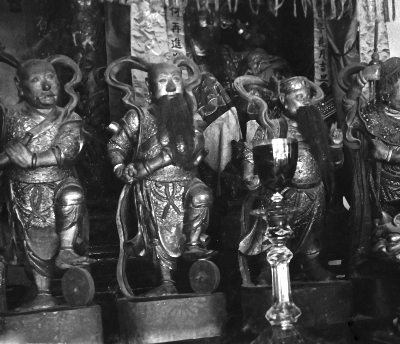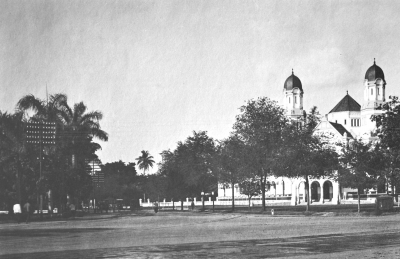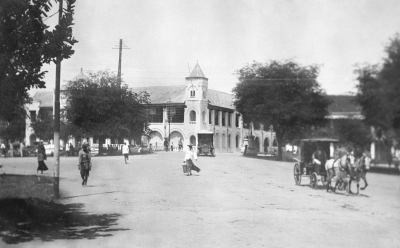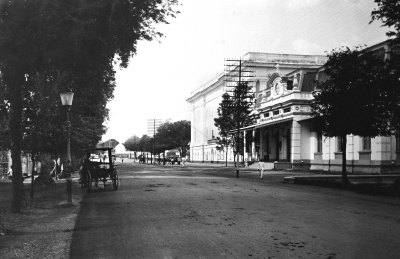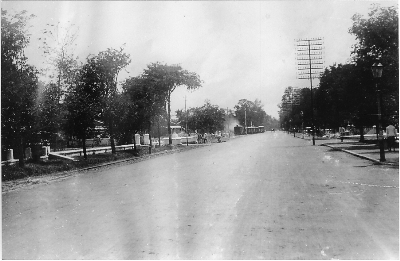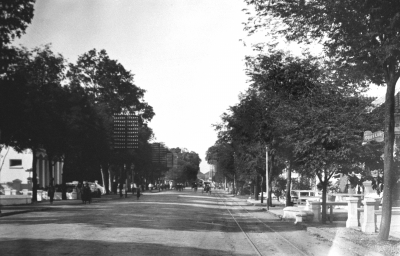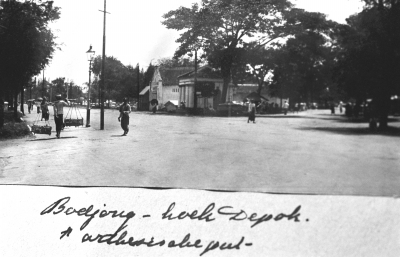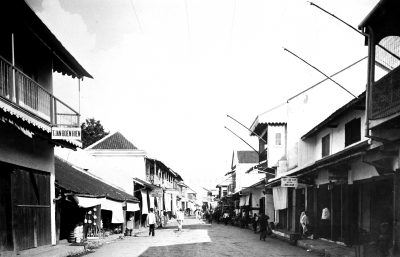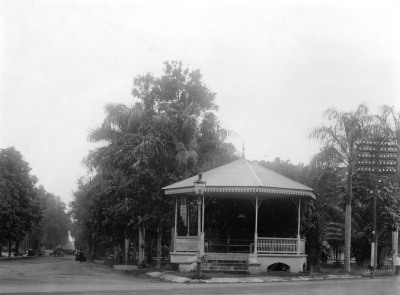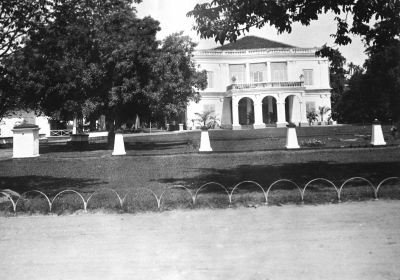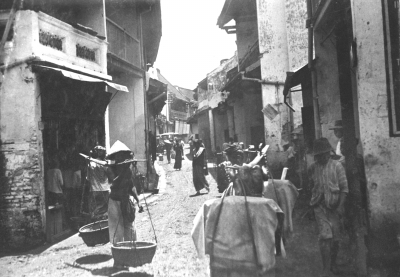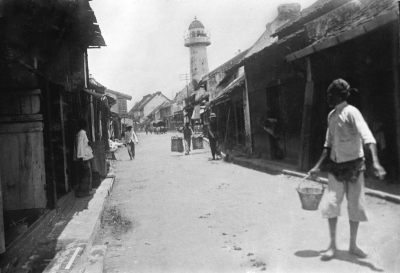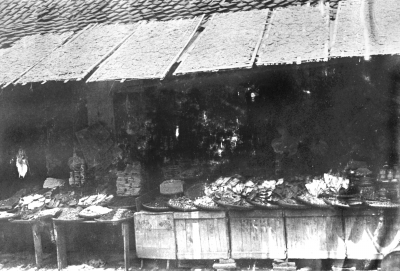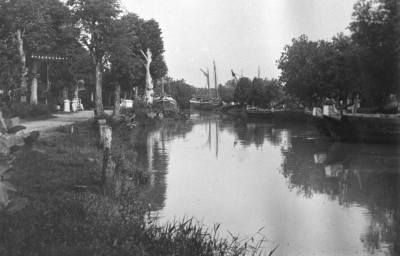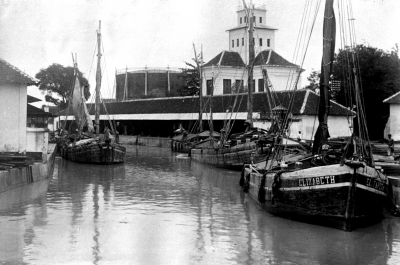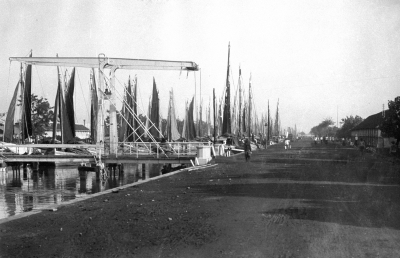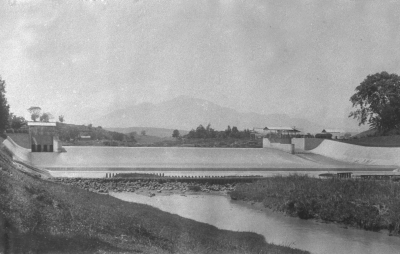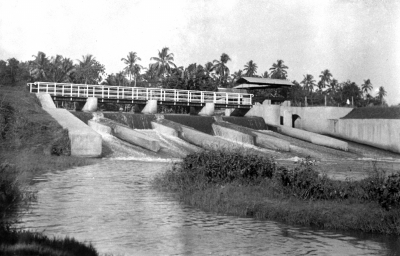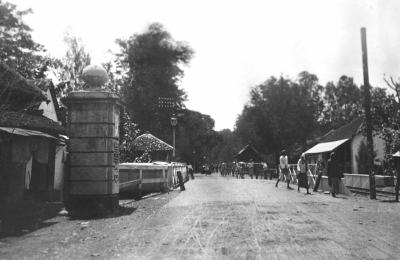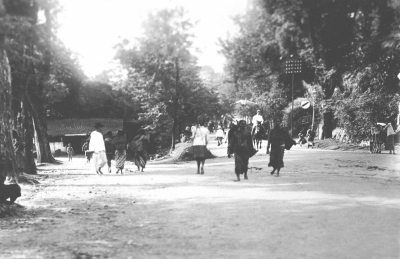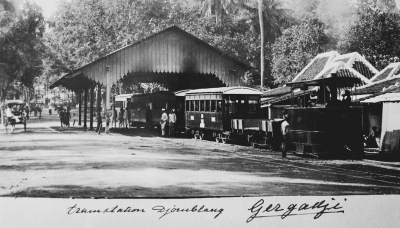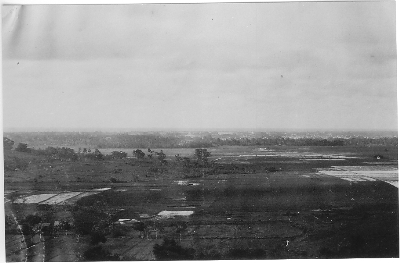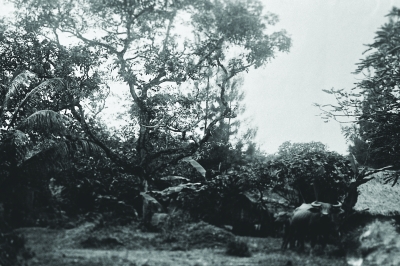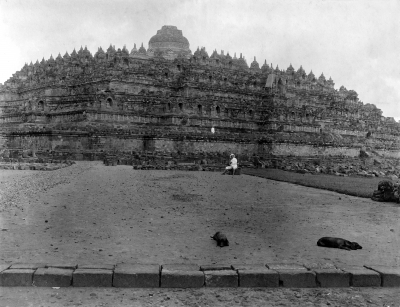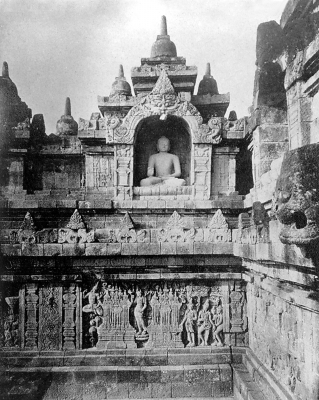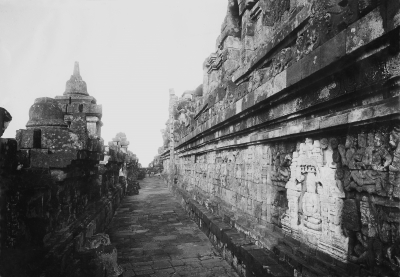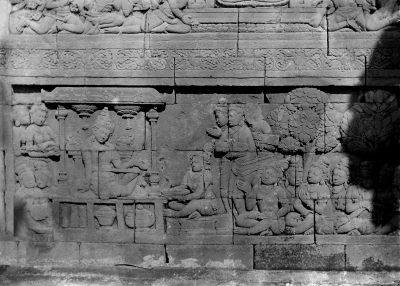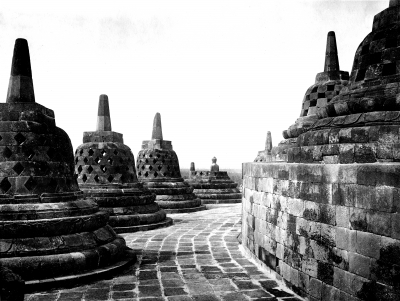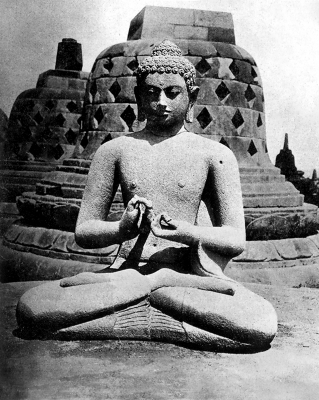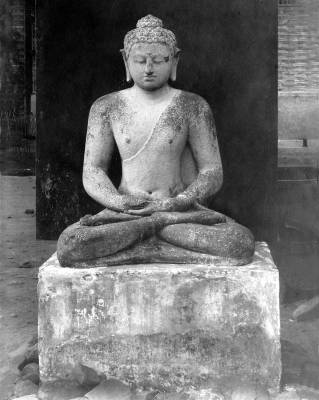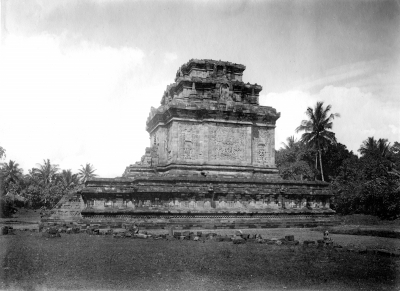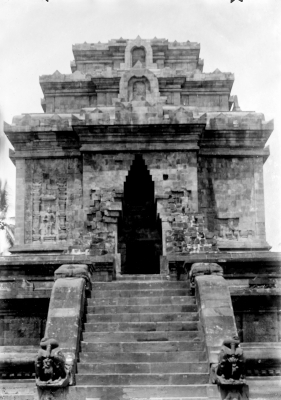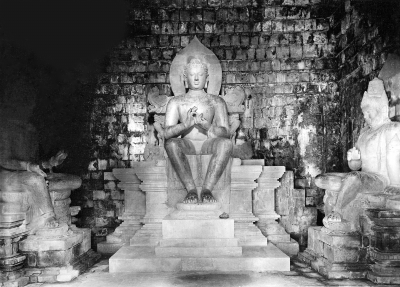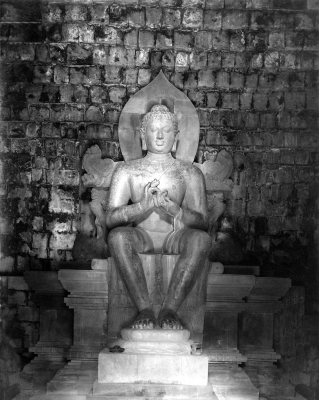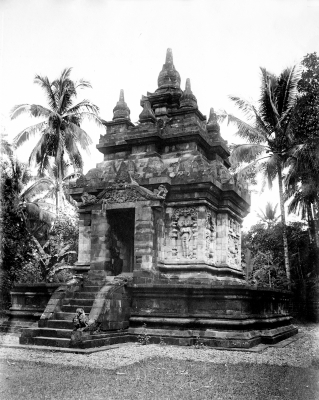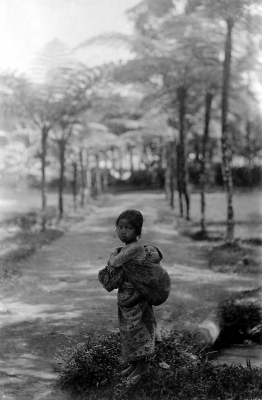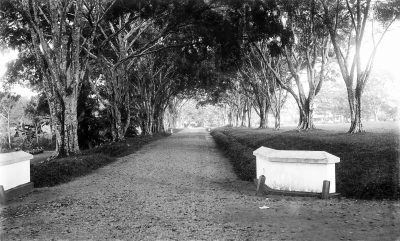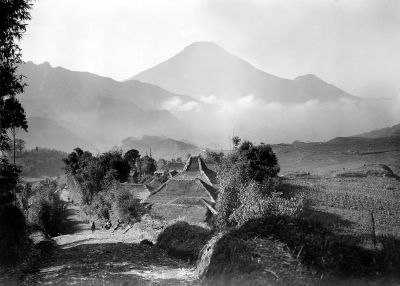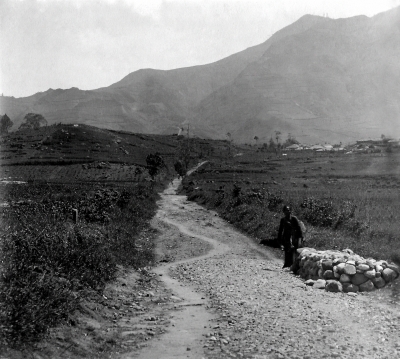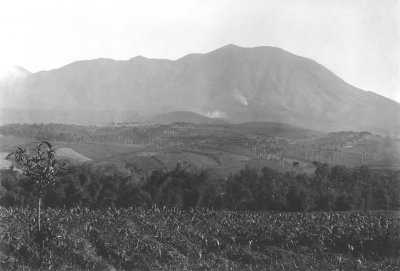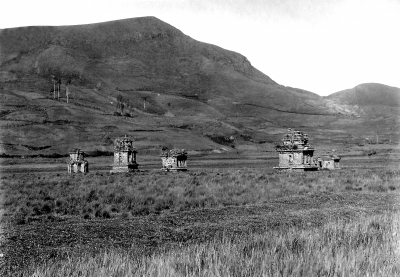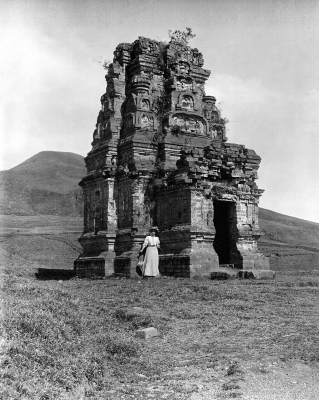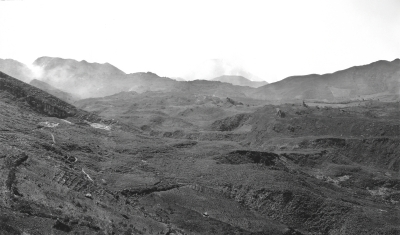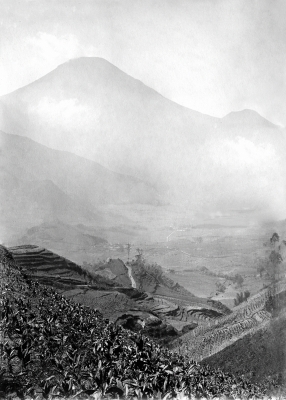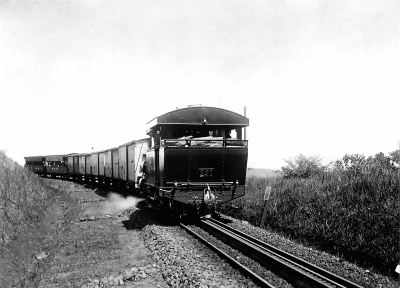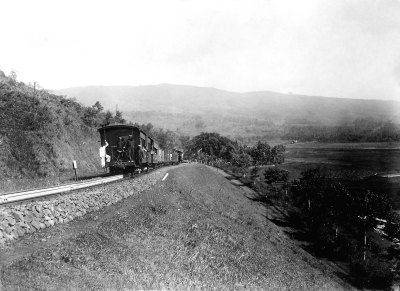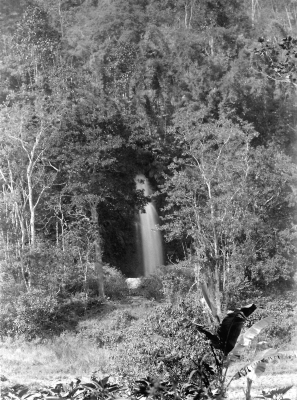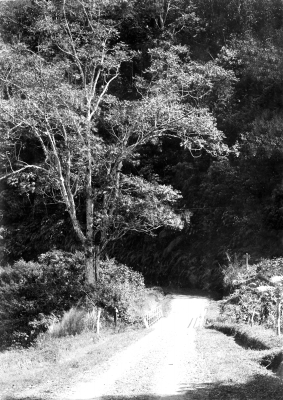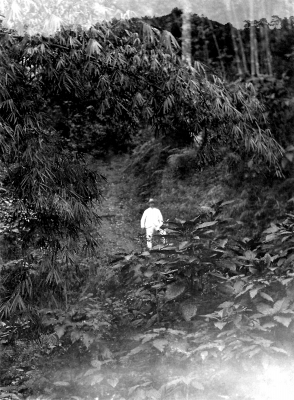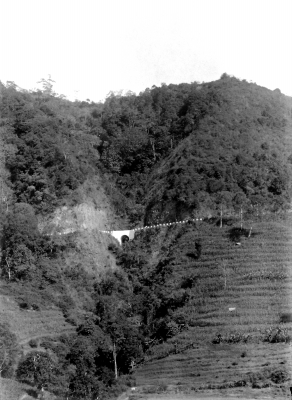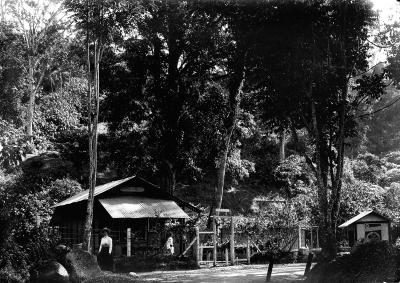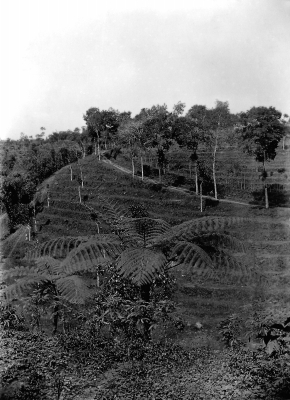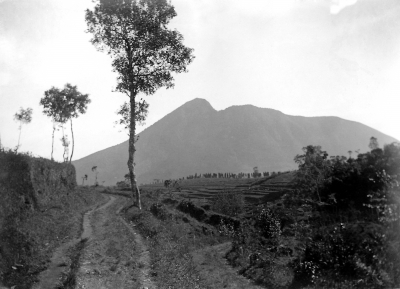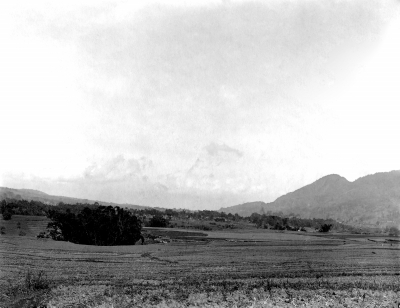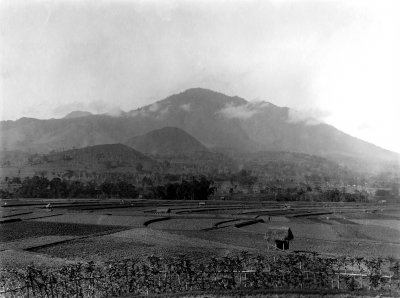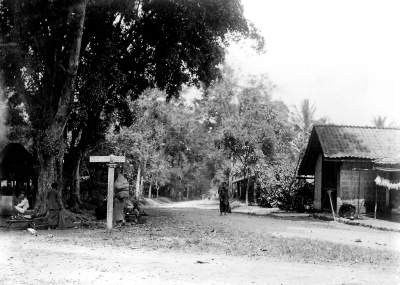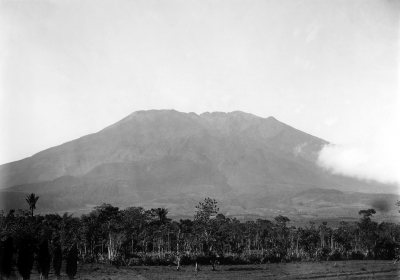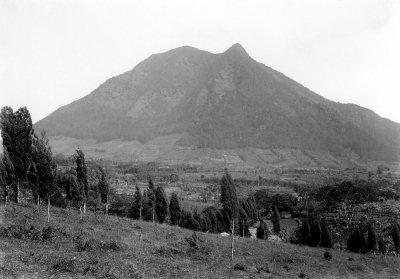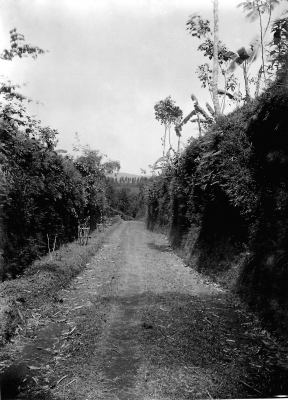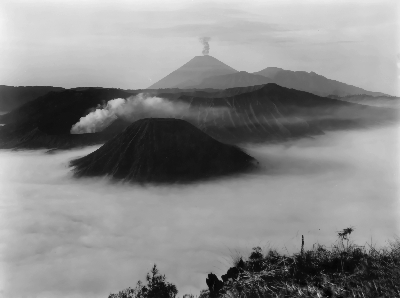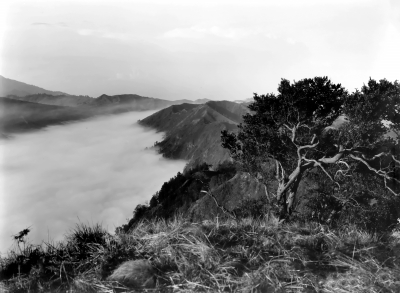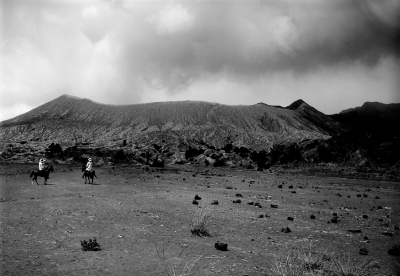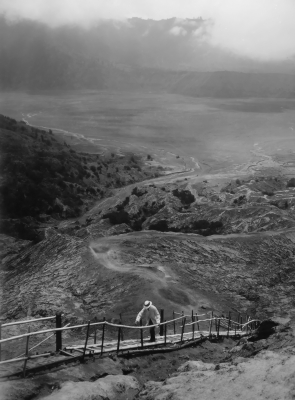On March 25, 1901, after graduation from Gent University, Charles returned to Java, together with his mother, widowed since 1899, in which year her husband Henri Louis had died from a gall bladder infection. In Semarang Charles Emile established himself as a general physician. His clinic was in the same house on the Bodjongse weg no 6, in which his father earlier had also run his doctor’s practice. His mother stayed in the adjacent pavilion, living semi independent with her own servant. The house Bodjongse weg no 6, around 1910-1991, is shown in images 013; the street is named Jalan Pemuda today.
In August 1901, soon after Charles Emile’s return to Semarang, his eldest brother Frederik Johan Benjamins 28-02-1870- passed away on 13-10-1901 and Charles took care of his widow and children. His eldest brother Frederik Johan had already returned to Semarang in 1897, where he married Christina Catherina Hazenberg in 1899, while working for the Victoria Trade Company. Here a son, Henri Louis, was born on 15 February 1900 and on 29 October 1901 a daughter, Frederika Johanna, who was born only two weeks after her father Frederik Johan had died during a cholera epidemic in 1901.
The official government statistics of 1901, the year of Charles Emile’s return to Semarang, show that the population of the Semarang region in that year included about 2.7 million inhabitants.
The population of Semarang town in 1901 was about 100.000 with the majority of the 8.400 Europeans of the region actually living in Semarang town.
Population Semarang region 1901
December 1901
| European | 8.402 |
| Indigenous | 2.641.680 |
| Chinese | 32.701 |
| Others | 1.306 |
| Total | 2.684.089 |
Source : Regeerings-Almanak voor Nederlandsch-Indie, Batavia, Landsdrukkerij 1906
(Governments Almanac for Netherlands Indie, Government printer 1906)
Semarang in those days was already an important centre for collection and shipment of plantation crops from middle Java. Crops included coffee, sugar, tea, tobacco, rice and other food crops. Local headquarters for most plantation companies from Central Java were located in Semarang, which was also the backstopping center for their European staff and their families.
In addition to those living in the Semarang region, some of the Europeans living in the Yogjakarta and Solokarta regions, respectively 2.043 and 3.637 persons, would also travel to Semarang for modern medical services, which were only available in this town. In this context one should also consider the considerable army garrison stationed in Semarang, whereby the resident army general was responsible for the entire Semarang region. In those days the commissioned officers were Europeans and the non-commissioned staff originated mainly from Ambon and other parts of the archipelago.
In the early 1900s the number of Europeans in Semarang and hinterland which would need access to modern medical services, based on the above data, can be estimated at between 10.000 to 15.000 persons. In addition, some well-to-do members of the Chinese and the Javanese population of Semarang and hinterland were also starting to use modern medical services in that period, particularly if the doctor had a command of the Chinese and Javanese languages, as was the case of Charles Emile, who spoke both languages.
An illustration of the relative size of each category of patients who consulted a modern medical doctor is given in a medical article Charles Emile wrote in 1915. In this article Charles Emile indicates that in Semarang 79 % of his patients were European, 18 % Chinese and 3% Javanese (Opera Omni no 024).
In 1901 there were five Dutch general medical practitioners in Semarang and hinterland to serve the European population and those members of the Chinese and Javanese community who already were using modern medical services.
Charles Emile soon found out that his four colleagues were all very hesitant to conduct surgery and were glad if he was prepared to carry out surgery on their patients. Fresh from his studies in Europe and with an interest in surgery and ear, nose and throat diseases, he was keen to help out and at the same time increase his own experience.
Since the early 1840s modern surgery in Europe and the USA had rapidly developed. This was initiated by William Morton’s development of surgical anesthesia in 1846; Louis Pasteur’s identification of bacteria as the source of infections in the 1850s; Joseph Lister‘s development of antiseptic surgery procedures in the 1860s; Wilhelm Conrad Roentgen’s invention of X rays in 1895 and Karl Landsteiner’s discovery of blood groups in 1901, allowing blood transfusions.
Charles Emile gradually improved his clinic for surgery. Image029. He further taught Christina Catherina Hazenberg, his future spouse, to assist him during operations and also trained two bright local Javanese boys to sterilize his surgical equipment and keep his clinic clean. In addition two coachmen, one for the day and one for the night, were instructed to take him to his patients and how to transport gravely ill patients.
A skull bone operation
The following story told by Christina Catharina to her grandchildren illustrates Charles Emile’s experiences with surgery.
One day Charles Emile, whose successful surgery work had started to be known, was asked if he was prepared to remove a life threatening skull bone tumor from the head of Colonel van Heutsz, the brother of Johannes Benedictus van Heutsz, Governor General of Netherlands Indie 1904-1909.
In spite of his lack of experience with skull operations at that time he volunteered on the condition that he received a written statement, that in case he failed he would not be held legally responsible. Furthermore he asked permission to practice skull bone surgery on some five prisoners, who had recently died. At that time skull bone surgery tools were not yet available on Java forcing Charles Emile to improvise and develop his’ own set of tools among which a special set of chisels to work on the skull bone. Charles Emile, after completion of his preparations several weeks later, invited the colonel to his clinic for the operation. His spouse assisted as usual.
In those days ether was the only chemical available for anesthesia. After Charles Emile had applied ether to his patient he only succeeded in bringing him partly under anesthesia. It turned out that Colonel van Heutsz was resistant to ether, as he was a heavy alcohol consumer and regularly consumed up to two liters of Dutch gin a day.
Thus, when Charles Emile, started to work on the skull bone with his chisels, the pain became nearly unbearable for the patient. Charles Emile therefore whispered to the colonel and grandmother, who held the patients head, to let the patient hold his arm around her and squeeze her. Grandmother remembered that she was very frightened during the operation as she could hear every beat of the chisel on the colonel’s skull. After the operation she remained black and blue for weeks from the colonel’s squeezing.
After the piece of skull bone with the tumor was removed, the hole was closed with bees’ wax and the skin stitched back on the skull. Fortunately Colonel van Heutsz quickly recovered from the operation and lived for another twenty years, making many additional useful contributions to society. We can assume that this skull bone operation was probably the first skull operation ever carried out on Java at that time.
His medical work in Semarang
No records have been kept of the number of patients who visited his clinic. Yet we know from his mother’s diary that he had a very busy clinical practice. However some indication on the number of patients is given in a medical paper he wrote in 1915. This shows that during the last three years of his work in Semarang 1127 ORL patients consulted him. One may assume that these patients formed only a small portion of all the patients who consulted him on other diseases.
In spite of his busy practice and his surgery work, he was already involved in medical research in those days, of which the result was reported in three papers he published during this period.-Opera Omni 003, 004, and 005. His Opera Omni shows that in total nine of his medical papers were based on research conducted while he was in Semarang.
Charles Emile’s activities to promote the establishment of a hospital for Semarang
Already early in his Semarang period he strongly felt the need for a modern hospital and was one of main promoters for the establishment of a hospital for Semarang. Unfortunately this hospital, the Juliana hospital, only materialized several years after his departure from Semarang. In 1913 Charles Emile wrote a short paper in support of the establishment of the hospital: “Het Juliana Ziekenhuis te Semarang published by van Rossen, Amsterdam.
After the hospital was established, Charles Emile regularly corresponded with the medical director of the new hospital from Holland, trained several of the medical staff in his clinic in Groningen and continued to support the hospital till he passed away in 1940.
Charles Emile’s interest in Chinese medicines: his Chinese patients
During his Semarang period Charles Emile, was very interested in Chinese matters, in particular in Chinese medicines. One of his Chinese friends, with whom he often discussed medical issues, was Mr Xiao Yao Chang, originally from Long Wen, Mei Xian, Gangzhou, China, the owner of the Chinese apothecary: Toko Obat Tiongkok or: Drugstore China of which drugstore photographs 035 to 038 are included in the photo collection.
Charles Emile learnt to speak and read Chinese at such a level that he was able to read the local Chinese newspapers. The result of this was that most Chinese from Semarang and surroundings, who wished to consult a modern European doctor, became Charles Emile’s patients.
In this context there is another anecdote from grandmother:
After the Chinese patient was cured, it was the custom to show his gratitude by sending the doctor a large cake on a porcelain plate. Grandmother faithfully collected the porcelain plates and took these with her to Holland. When she passed away in 1976, we learnt that most of these plates were original Qing Dynasty porcelain and were worth a small fortune!
Management of the doctor’s household and clinic:
In the early 1900s managing a household with a clinic attached in Semarang, involved a large staff. Grandmother employed some seventeen persons. See image 016 which shows eleven of her staff members and the son of the first coachman.
Underneath is a list of the domestic staff employed in Charles Emile’s household and clinic, which may be interesting for us, living in the twenty-first century.
| Function | Number | Function | Number |
| Major domus: chief of the household staff & butler | 1 | Cooks | 2 |
| Clinic assistants | 2 | Washing & ironing girls | 2 |
| Coachmen: one for the day & one for the night. | 2 | Floor cleaning girls | 2 |
| Grandmother Sorg’s servant | 1 | Garden: gardeners | 2 |
| Children’s personal servant | 1 | Whitewash man | 1 |
| The milch cow caretaker | 1 | Total | 17 staff |
We grandchildren were especially interested in the activities of two of the staff, the milch cow caretaker and the whitewash man:
The milch cow caretaker and grand mother’s milch cows.
At Charles Emile’s request grandmother kept several cows to provide fresh milk for her children and selected patients. When in milk the cows were stabled in Semarang. The other cows were kept in the herd of the family Mc Gillevry who owned a tea plantation in Ungaran, which was located at a higher altitude above sea level, where the climate as cooler. The job of the milch cow caretaker, or milker, as he was called by grandmother, was the daily milking of the cows in Semarang and when needed, to bring the cows on foot from Semarang to Ungaran and back. During the absence of the milker while bringing cattle to Ungaran grandmother milked the cows herself.
The whitewash man
In the early 1900s on Java, walls of houses and gardens were whitewashed with quicklime, as modern wall paints on an oil basis were not yet available. Due to the size of the house and the garden walls, its intensive use and the effects of the tropical climate, the whitewash man had a full time job: after he had finished one part of the house he moved to another part and after he had covered all rooms and garden walls, he had to go back to the first room to apply the next coat of white wash.
1905 European study leave to specialize in ORL diseases
In May 1905 Charles Emile went to Europe for health reasons and took his mother and his sister-in-law Christina Hazenberg and her two children with him. The family stayed first in Paris, where he used the occasion to study ORL diseases with Professor Luc. There after the family traveled to Amsterdam where on 13 October Charles Emile married Christina Catharina, our grandmother in the offices of notary public Wertheim.
In early 1906 the family returned to Semarang where Charles Emile again opened his clinic. In addition to his very busy general medical practice he also started to receive patients with ear, nose or throat diseases.
Music
In Semarang Charles Emile continued to improve his piano playing. He also regularly played piano trios with friends and was the instructor and conductor of a ladies’ choir that mainly sung 19th century choir music.
Photography
Another hobby of Charles Emile was photography, for which he used a camera with glass plates. He processed the exposed glass plates in the laboratory of his clinic, with the help of one of his clinic assistants. When making outdoor photographs, one of these assistants also joined him to carry the heavy equipment. It is particularly interesting to note that he also conquered the technique of taking pictures with artificial light, for which he used magnesium powder. See image 079, which was taken with magnesium lightning inside the Mendut Temple, part of the Borobudur temple complex, near Magelang, Central Java.
His magnificent collection of 124 photos, taken in Semarang during his ten years stay from 1901 to 1911, has been preserved. A selection of these photos is attached in annex 2. The entire collection can be seen on my website: www.cvsanten.net, in the chapter: “The photo collection of Charles Emile Benjamins: Java 1901-1911”
Grandmother kept the collection of glass plates and camera till she died in 1976, but it is not known where these glass plates and camera are stored today.
The following list shows the subjects of his photographs of which a small selection is shown in annex 2.
List of the subjects of photographs taken by Charles Emile :
| I | Youth 1873-1900 | 001-005 |
| Semarang Family & House 1901-1911 | 006-028 | |
| Semarang Clinic CEB 1901-1911 | 029-034 | |
| II | Semarang Chinese apothecary | 035-041 |
| Semarang town 1901-1911 | 042-067 | |
| III | Trip to Borobudur 1909 | 068-081 |
| Trip to Dieng Plateau 1910 | 082-096 | |
| Cogwheel railway Ambarawa-Bedono 1909? | 097-099 | |
| IV | Trip to East Java 6-20 July 1910 | 100-117 |
| Bromo Trip | 118-124 | |
| V. | Utrecht The Netherlands 1911-1923 | 125-133 |
| Groningen 1923-1939 | 134-138 | |
| ORLAS 1926-1939 | 139-146 |
Travels on Java
Charles Emile made the following travels in Central and East Java.
Central Java
- In 1909 grandfather and his family made a trip to Ambarawa where he took images nos CEB 097-099 of the cogwheel train running from Semarang to Yogjakarta. The railway line Semarang-Yogjakarta, which was in operation from 1907 to 1977 was mainly established to bring produce from the plantations in the Yogyakarta area to Semarang for overseas shipment. Commodities included tobacco, coffee, tea, sugar and fire wood. The locomotives were mounted with cog wheels, as there were several mountainous stretches with steep slopes in the line. In 1977 the railway line Semarang Yogjakarta via Magelang was stopped as it was no longer viable. However the 12 km leg Ambarawa- Bedono was maintained for tourism. Today tourists can travel with the train from Ambarawa, the site of the Indonesian National Railway Museum to Bedono, a mountain resort at about 800 meter above sea, using one of the two original locomotives and passenger carriages from 1907, which are still operational. The locomotives still run on fire wood, as in 1907. The route of the original line was: Semarang, Kedungjati, Ambarawa, Magelang,Tegalsari, Sleman, Yogjakarta, Bantul.
- Trip to the Dieng plateau and Wonosobo
Here Charles Emile visited the beautiful Bima candi-temple with grandmother standing in front of the candi: 090. His photographs also include beautiful pictures of Wonosobo and surrounding mountains: Image 086. - A trip to the Borobudur temple between Magalang and Yogjakarta: 068-081
Image 068 shows Dr. Vogel seated in front of the temple. Dr Vogel was a friend and colleague, who owned one of the first cars in Semarang: image 025. One may assume that he took Charles Emile and his spouse with his new car to see the Borobudur temple complex which at that time, 1907-1911, was under restoration by Theo van Erp, an army civil engineer.
East Java
- A trip to Surabaya, where he visited the family Harlof, 023 relatives of his spouse and to the well-known waterfall of Tretes. Image100
- A trip to the Bromo massive from Malang via Nongkojajar: Images 118-123
- A visit to Batu, a mountain resort above Malang and from there a trip along the road Batu to Pujon: Images 101-117
N.B. Probably some of these visits were combined in the same trip.
Modes of travel
The question is often asked: “Which type of vehicles did Charles Emile use during his travels on Java in those days: horse drawn coaches, trains, automobiles, or litters?”
Grandmother mentioned the use of litters with four bearers when Frederika Johanna Sorg traveled with her grandchildren during school holidays to the tea plantation of the family Mc Gillevry which was located in the mountains above Ungaran.
Automobiles and trains
Charles Emile may have used the automobile of his friend Dr Vogel for some of his trips. Furthermore he may have used the train, as the line to Yogjakarta was already operational from 1868 onwards Semarang-Tanggung-Kedungjati-Surakarta-Yogjakarta-Ambarawa-Semarang and the line Jakarta-Semarang-Surabaya since 1896.
Grandmother, while giving many details of her travels with grandfather, was not specific about the modes of travel used.
